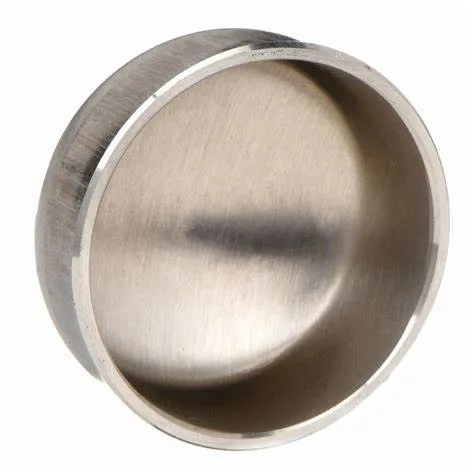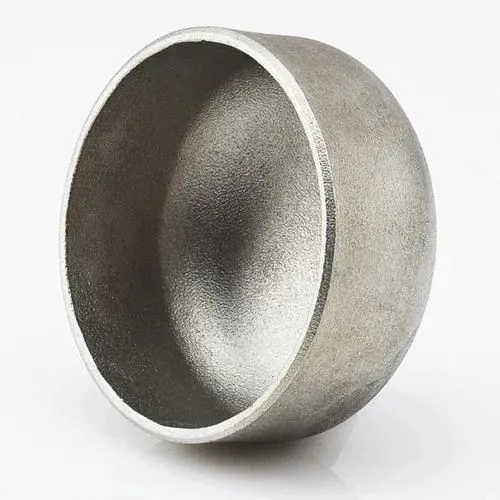JIS B2311 je japonský průmyslový standard, který se vztahuje na potrubní tvarovky pro svařování na tupo, včetně uzávěrů používaných v potrubních systémech. Čepice pro svařování na tupo slouží k uzavření konce trubky a poskytují těsnění, aby se zabránilo úniku nebo kontaminaci. Zde je úvod k čepicím pro svařování na tupo JIS B2311:
- 1. JIS B2311 Standard:
- - Norma JIS B2311 specifikuje požadavky na konstrukci, rozměry, materiály, výrobu a zkoušení tvarovek pro svařování na tupo, včetně uzávěrů, v potrubních systémech.
- - Norma zajišťuje, že uzávěry vyrobené v souladu s normami JIS splňují normy kvality a jsou kompatibilní s ostatními komponenty potrubí.
- 2. Čepice pro svařování na tupo:
- - Čepice pro svařování na tupo podle JIS B2311 je tvarovka určená k bezpečnému zakrytí a utěsnění konce trubky, která nabízí ochranu a zachování integrity potrubního systému.
- - Uzávěry se používají v situacích, kdy konec trubky vyžaduje uzavření, buď trvale nebo dočasně, aby se zabránilo úniku, kontaminaci nebo aby se zajistilo ukončení systému.
- 3. Materiál a konstrukce:
- - Čepice pro svařování na tupo podle specifikací JIS B2311 jsou k dispozici v různých materiálech, jako je uhlíková ocel, nerezová ocel a legovaná ocel, aby vyhovovaly různým aplikačním požadavkům.
- - Tyto uzávěry jsou vyráběny za použití standardizovaných konstrukčních metod, aby bylo zajištěno pevné a těsné spojení při přivaření ke konci trubky.
- 4. Aplikace a výhody:
- - Čepice pro svařování na tupo nacházejí uplatnění v různých průmyslových odvětvích, včetně těžby ropy a zemního plynu, chemických procesů, úpraven vody a dalších, kde je třeba bezpečně uzavřít koncovky potrubí.
- - Uzávěry poskytují ochranu konců potrubí před vlivy prostředí, zabraňují kontaminaci a pomáhají udržovat čistotu a integritu potrubního systému.
- 5. Instalace a svařování:
- - Správné instalační postupy, včetně správného vyrovnání, přípravy konce trubky a svařovacích technik, jsou nezbytné při instalaci uzávěrů pro svařování na tupo, aby bylo zajištěno těsné a nepropustné těsnění.
- - Svařování je běžná metoda pro připevnění uzávěrů k trubkám, poskytující bezpečný a trvalý uzávěr, který odolá tlaku, teplotním změnám a proudění tekutiny v systému.
- Stručně řečeno, uzávěry pro svařování na tupo JIS B2311 jsou klíčové komponenty používané v potrubních systémech k bezpečnému utěsnění a ochraně konců trubek. Tyto uzávěry splňují standardizované požadavky, aby byla zajištěna kvalita, spolehlivost a kompatibilita v průmyslových aplikacích, kde je nutné uzavření potrubí a ochrana.
What Is a Butt Welding Cap and How Is It Used in Industrial Piping?
In industrial piping systems, end-of-line sealing and branch closures require robust solutions. A butt welding cap serves as a critical component for terminating pipes securely. By providing a seamless, welded closure, this fitting maintains system integrity, prevents leaks, and supports compliance with industry standards.
What Is a Butt Welding Cap?
A butt welding cap—also called a pipe end cap or buttweld end cap—is a round fitting designed to close off the end of a pipe. It’s manufactured to match the pipe’s outer diameter and schedule, with either a hemispherical or flat face. To install, both the pipe end and cap are beveled to form a V‑groove, enabling full‑penetration, fusion welds. Common materials include carbon steel, stainless steel, nickel alloys, and other engineered grades, chosen to satisfy pressure, temperature, and corrosion‑resistance requirements.
How Is Butt Welding Cap Used in Industrial Piping?
Butt welding caps find application across oil & gas, petrochemical, power generation, water treatment, and general process industries for both permanent and temporary closures. During hydrostatic testing, technicians install caps to seal off sections of piping while monitoring for leaks. In new construction or retrofit projects, caps terminate branch lines, future tie‑in spools, or dead‑end mains until system expansion. Welders prepare each joint by cleaning and beveling surfaces, aligning the cap precisely, and executing a root pass followed by filler passes per the qualified Welding Procedure Specification (WPS). Post‑weld heat treatment and non‑destructive examination (NDE)—such as radiography or ultrasonic testing—verify weld integrity and compliance with ASME B16.9 and related standards. Additionally, temporary caps enable safe isolation during maintenance, allowing for segment testing and dewatering under regulatory protocols.
Benefits and Best Practices
Butt welding caps offer a smooth‑bore transition that minimizes flow disruption and stress concentration. Their full‑penetration welds deliver exceptional structural strength and leak resistance. To optimize performance, engineers should:
Select caps with matching material grades and wall thicknesses
Adhere to proper bevel angles and joint fit‑up tolerances
Follow qualified WPS protocols rigorously
Consider cladding or protective coatings in corrosive environments to extend service life
Regular inspection and thorough documentation ensure long‑term reliability and safe operation under demanding conditions.
Butt welding caps are indispensable components for achieving durable, leak‑proof pipe terminations in a wide range of industrial applications.
Butt Welding Cap FAQs
What is a butt welding cap?
|
What materials are commonly used?
|
What standards govern butt welding caps?
|
How are butt welding caps installed?
|
Where are butt welding caps typically used?
|
What are the advantages of threaded caps?
|
















